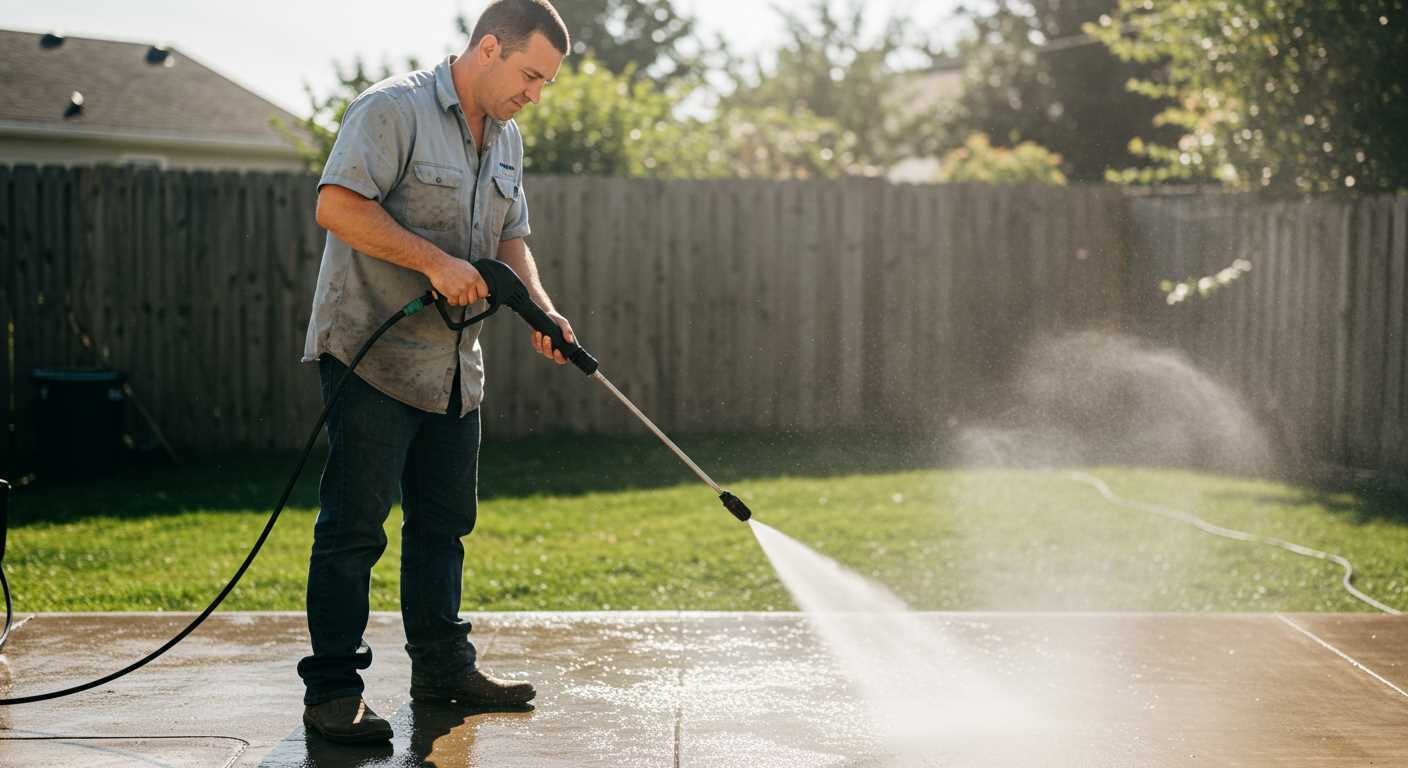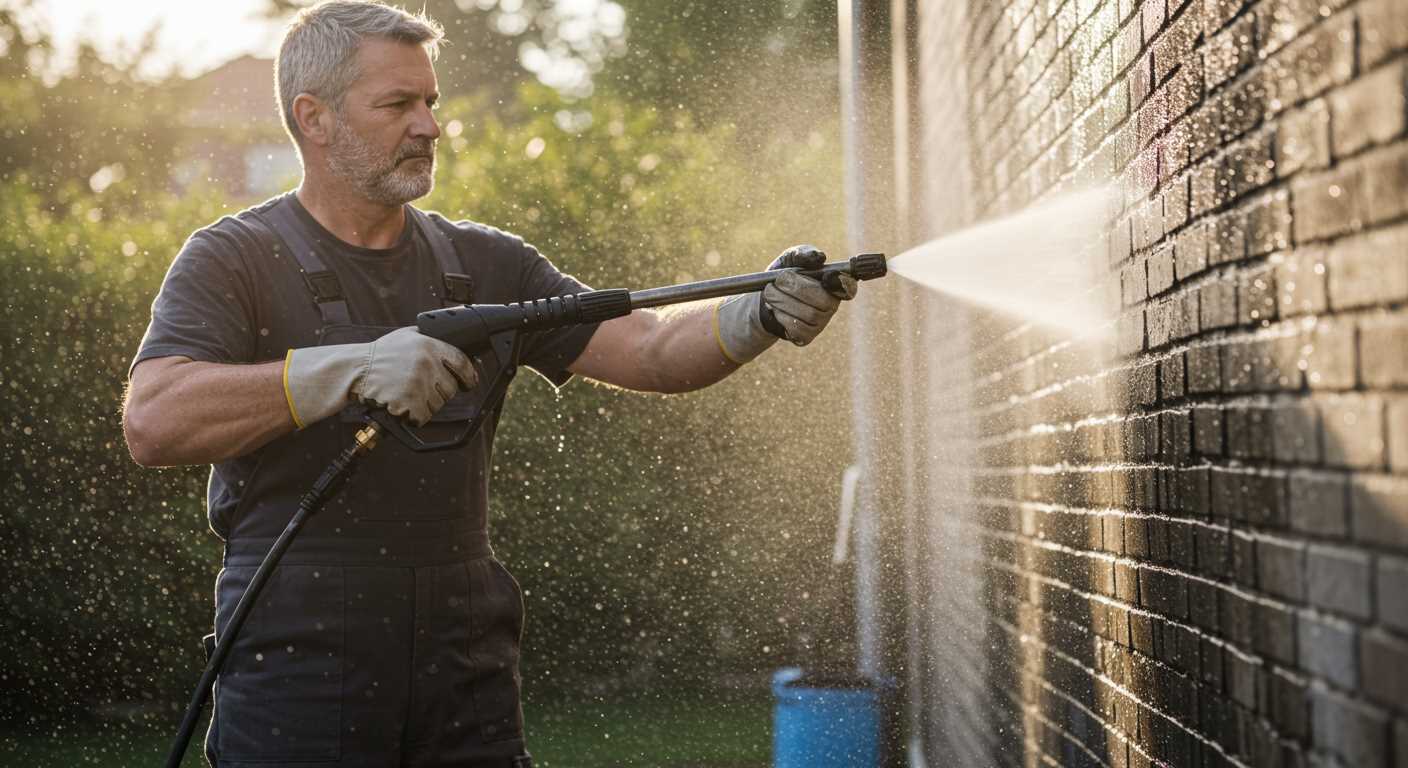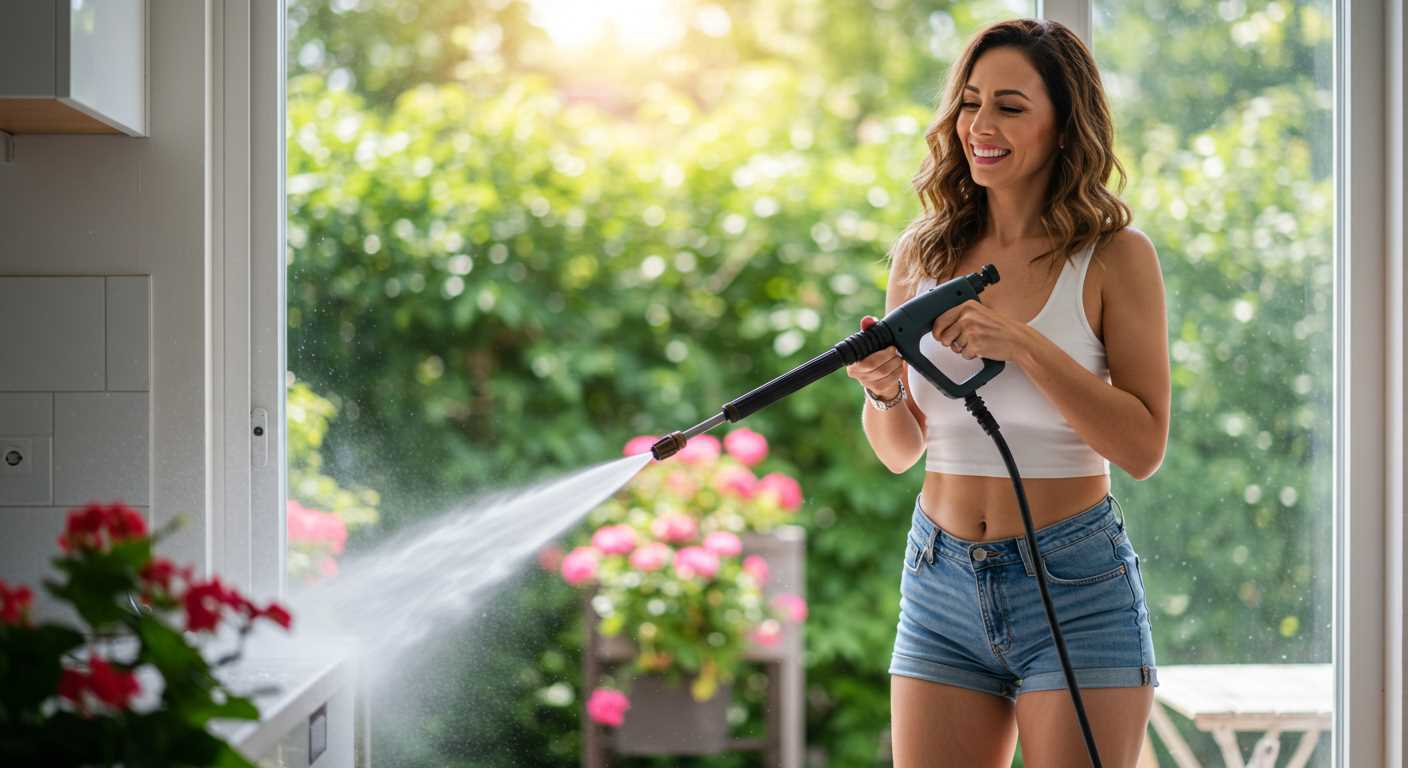



.jpg)
Transforming that neglected cleaning device into something useful is not only practical but can also be a rewarding project. First, consider refurbishing it. I remember taking apart an old unit and discovering that a simple replacement of seals and hoses brought it back to life. It was like unearthing a hidden treasure. A thorough maintenance routine can often revive these machines, making them as good as new.
If refurbishing doesn’t appeal to you, think about repurposing. One of my friends converted their defunct machine into a unique garden fountain. By redirecting the water flow, they created a stunning feature for their backyard. It’s a clever way to give new life to something that was collecting dust. You can also use the parts for art projects or DIY home improvements.
Alternatively, selling or donating can be a great option. Many hobbyists and DIY enthusiasts are eager to buy second-hand equipment for a fraction of the cost. Websites and community boards are excellent platforms for this. I once sold a similar device online and was pleasantly surprised by the interest it garnered. If selling isn’t feasible, consider donating it to a local charity or community centre that may benefit from it.
Lastly, recycling should not be overlooked. If the device is beyond repair, check for local recycling programs that accept electric appliances. This not only helps the environment but also ensures that valuable materials are reused. I often reflect on how many resources we can save by recycling instead of tossing things in the landfill.
Assess the Condition of Your Pressure Cleaner
Start by examining the functionality of your unit. Plug it in and run a test cycle. Listen for any unusual noises or vibrations that weren’t present before. A well-maintained device should operate smoothly without excessive rattling.
Check for leaks around hoses and connections. A small drip can indicate wear and tear, while larger leaks can render the equipment unusable. If you find any, consider replacing the affected parts or the entire unit if repairs seem extensive.
Inspect the nozzle and spray wand. If the spray pattern is uneven or weak, clogs may be present. Cleaning or replacing the nozzle can enhance performance significantly. I recall a time when a simple nozzle replacement restored a friend’s unit to like-new condition, saving him from an unnecessary purchase.
Evaluate the motor and pump. Look for signs of rust or corrosion, which can affect longevity. If you notice any, it might be time to assess whether repairs are feasible or if investing in a new model is a better choice.
Don’t forget to check the electrical components. Frayed cords or damaged plugs pose safety risks. If any issues are apparent, it’s best to address them immediately to prevent hazards.
Finally, consider how often you used the cleaner and for what tasks. If it has seen significant use, it may be nearing the end of its lifecycle. Weigh the cost of repairs against the potential benefits of a replacement. A robust unit can be a great long-term investment, but sometimes it’s better to start fresh.
Decide Between Repairing and Replacing Components
Repairing specific elements can be a smart choice if you’re experiencing minor issues. Before you decide, weigh the costs of repairs against the price of new components. For instance, if a pump is malfunctioning, replacing seals or gaskets might suffice rather than opting for a complete pump replacement.
Consider the following table to assess the most common components and their potential repair or replacement options:
| Component | Repair Option | Replacement Cost | Repair Cost |
|---|---|---|---|
| Pump | Seal and gasket replacement | £150-£300 | £20-£50 |
| Motor | Brush replacement | £100-£200 | £30-£70 |
| Hose | Patch or replace fittings | £20-£50 | £5-£15 |
| Nozzle | Clean or replace | £10-£30 | £2-£10 |
In my experience, I once had a unit where the motor began to show wear. Instead of replacing the entire motor, I opted for new brushes. This saved me a significant amount and extended the life of the equipment. Always examine whether a simple fix could breathe new life into your device.
Evaluate the overall performance after repairs. If issues persist, it might be time to consider a full replacement. Weigh the long-term benefits of investing in a new model against the costs of continual repairs. Sometimes, starting fresh can be more economical in the long run.
Explore Recycling Options for Your Unused Cleaning Equipment
Consider local recycling centres that accept mechanical tools. Many municipalities have specific drop-off points for electrical devices, which often include these machines. Contact your local waste management facility for details on accepted items and recycling processes.
Another avenue is to investigate local hardware or home improvement stores. Some retailers offer take-back programmes for old machinery. They may have partnerships with recycling companies to ensure proper disposal and recycling of parts.
- Check with community recycling events. Many towns organise special days dedicated to electronic waste disposal, allowing you to recycle your equipment responsibly.
- Look into specialised recycling companies that focus on power tools and machinery. They often have the infrastructure to disassemble and recycle various components, reducing landfill waste.
- Explore donation opportunities. Local charities or community centres may accept functioning units, providing them to those in need.
Remember to remove any fluids or hazardous materials before recycling. This ensures safety for workers handling your items. Always consult your local regulations regarding disposal of chemicals to avoid environmental harm.
Lastly, consider repurposing parts for creative projects. Components like hoses, nozzles, or wheels can find new life in DIY projects, helping you keep materials out of landfills while sparking creativity.
Sell or Donate Your Pressure Cleaning Device
Consider listing your cleaning machine on online marketplaces like eBay or Facebook Marketplace. These platforms attract buyers looking for budget-friendly options. Be honest about its condition and include clear photos to enhance your listing’s appeal.
Donation Opportunities
If selling doesn’t appeal to you, donating is an excellent alternative. Local charities, community centres, or non-profit organisations often appreciate such contributions. They can either use the equipment for their own purposes or sell it to raise funds.
- Search for nearby charities that focus on community service.
- Contact local schools or recreational centres; they may use it for maintenance.
- Explore thrift shops; they often accept functional items.
Online Donation Platforms
Utilise websites that connect donors with those in need. Platforms like Freecycle or Buy Nothing groups allow you to give away your device to someone in your community who can benefit from it.
Additionally, sharing your experience with others can inspire them to contribute too. For example, I once donated a camera that had a few quirks; it found a new home where someone repaired it and used it significantly. You never know how your item could change someone else’s life. It reminds me of how a digital camera come with picture fix can bring joy and utility back into circulation.
Ultimately, whether you decide to sell or donate, both options allow your device to serve a new purpose rather than gathering dust in your garage.
Repurpose Parts for Other Uses
Disassembling your unit can reveal valuable components that serve different purposes. For instance, the motor is often still in good condition–consider using it to power a DIY project, like a small generator or a fan. I’ve seen people convert motors into devices for woodworking, like lathes, which can be a fun challenge.
Utilise Hoses and Accessories
The hoses are another treasure trove. While they may no longer serve their original function, they can be repurposed for watering gardens or cleaning vehicles. I had a friend who fashioned a unique irrigation system using various attachments and old hoses. It not only saved money but also reduced waste.
Frames and Wheels for Mobility Solutions

Frames and wheels can transform into something entirely new. I once witnessed a creative individual turn a worn-out unit into a rolling tool cart. By removing the frame and attaching a wooden top, they created a mobile workstation that was both functional and stylish. It’s amazing how a bit of ingenuity can breathe new life into unused parts.
Don’t overlook the smaller components, like connectors and fittings. They can be handy for various DIY tasks around the home. I often keep a box of these parts for quick repairs or garden projects; you never know when you might need them!
Research Local Disposal Regulations
Check your municipality’s guidelines before disposing of any cleaning equipment. Local regulations can vary widely; some areas have specific rules regarding hazardous materials. For instance, many cleaning devices contain oils or chemicals that require special handling.
I recall a situation where I was ready to dispose of a malfunctioning unit. A quick visit to the local waste management website revealed that they organised specific collection days for hazardous waste. I learned that dropping it off at the wrong site could lead to fines or, worse, environmental damage.
Consult your local recycling centre’s website or give them a call to find out their criteria for disposal. Some areas have designated drop-off points for appliances, while others may offer curbside pickup for bulky items. Familiarise yourself with these details to ensure proper disposal.
For those considering recycling, inquire if your area has schemes that accept used cleaning devices. Some facilities even separate materials for reuse, which can be beneficial for the environment. Always keep safety in mind; if you’re unsure about any part of the process, seek assistance from professionals.
Lastly, keep documentation of your disposal method. If you ever need to refer back to how you handled the situation, having a record can be helpful. This step might seem trivial, but it can save you from potential issues down the line.
Consider Upcycling Ideas for Your Unused Cleaning Equipment
Transforming a defunct cleaning device into something functional can be a rewarding project. I’ve seen numerous creative uses for these machines that breathe new life into them. A popular option is turning the motor into a generator. By attaching a suitable alternator, you can create a compact power source for various tools or even for camping trips.
Garden Projects
Another great idea involves repurposing the tank. I once converted a damaged unit into a stylish garden planter. With a bit of painting and drainage holes, it became an eye-catching feature in my backyard. Additionally, if the hose is still intact, it can be used to create a watering system for your plants. Just attach a few nozzles and bury the hose under the soil for a simple drip irrigation solution.
Creative Home Uses
For those who enjoy crafting, the metal components can be used for various DIY projects. I fashioned a metal sculpture from leftover parts. It added a unique touch to my home décor. Moreover, consider using the intact trigger gun for other cleaning applications; you can find compatible attachments or even use it for a short trigger pressure washer gun setup in a different context.
These ideas not only help reduce waste but also allow you to engage in fun projects that enhance your living space. Explore your creativity and see what you can come up with from that unused machine!
Learn About Maintenance to Extend the Life of New Models
Regularly check and clean the filter to prevent clogs. I recall a time when I neglected this simple task, leading to overheating and a costly repair. A clean filter ensures optimal performance and longevity.
Change the oil regularly, following the manufacturer’s specifications. I once had a unit that ran for years without an oil change, but the wear and tear took its toll. Fresh oil keeps components lubricated and reduces friction.
Seasonally inspect hoses and fittings for cracks or leaks. A friend learned this the hard way when a worn hose burst during use. Replacing damaged parts promptly can save you from more significant issues later.
Store equipment properly. I always recommend a dry, sheltered place away from extreme temperatures. Exposure to the elements can lead to premature wear. Using a cover can also keep dust and debris at bay.
Use the correct detergent. I’ve seen many units suffer due to improper cleaning agents. Always refer to the manual for recommendations to avoid damaging seals and components.
Lastly, follow the manufacturer’s guidelines for usage. I’ve witnessed units fail because users pushed them beyond their limits. Respecting the recommended pressure and flow rates ensures a longer lifespan.

.jpg)



.jpg)


